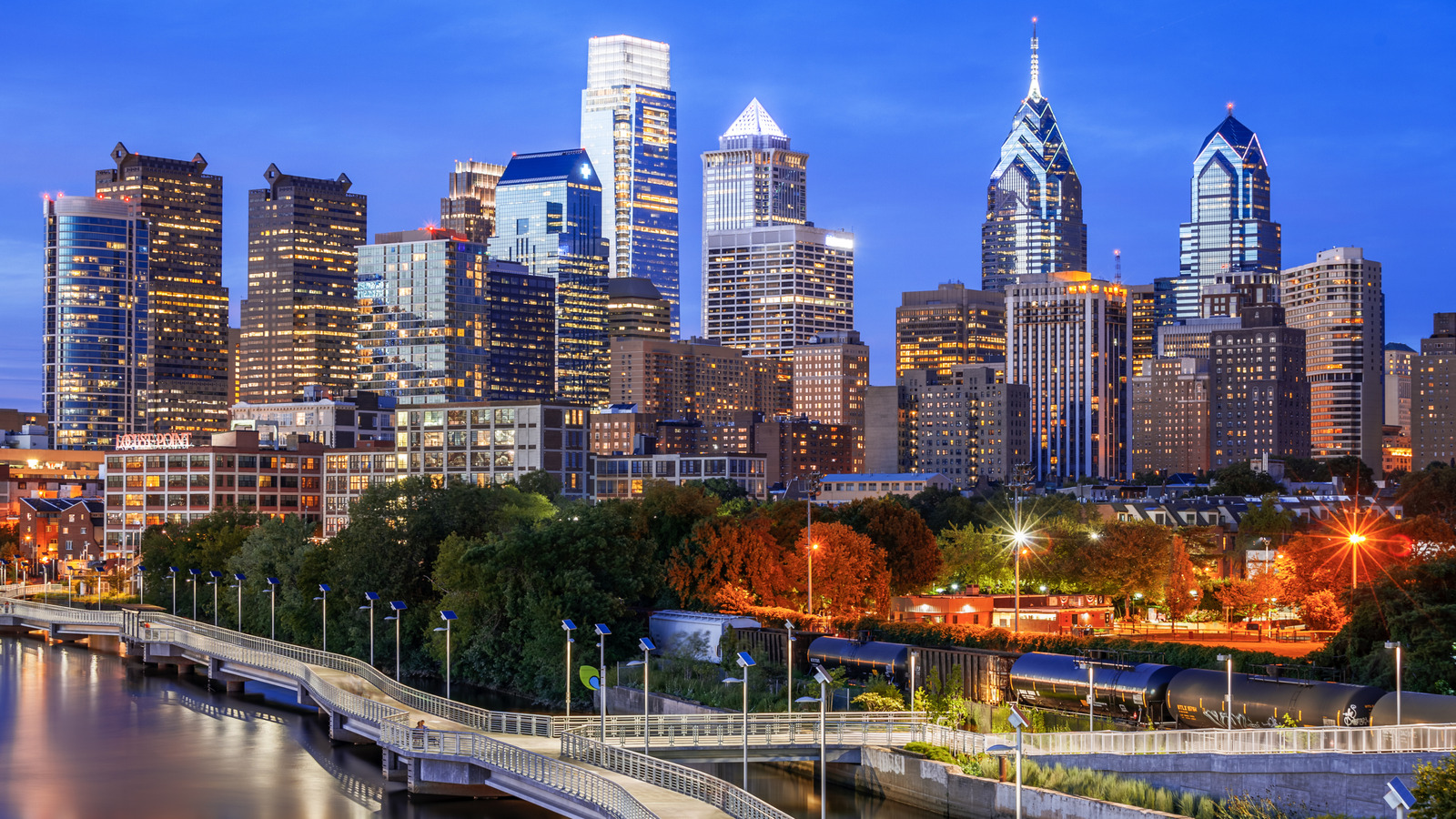
www.thecollector.com
9 Must-Visit World Heritage Sites in the Netherlands
From medieval storms like the St. Lucia’s Flood in 1287 and the catastrophic All Saints’ Flood of 1570 to the brutal Siege of Haarlem during the Eighty Years’ War and the 1953 North Sea Flood that reshaped flood policy, the Netherlands has repeatedly faced existential threats. Each crisis fueled innovations, from Renaissance canal networks and reclaimed polders to water-based defense lines. In Utrecht, Amsterdam and beyond, history is etched in living structures and landscapes. This guide highlights nine UNESCO World Heritage Sites, including windmills, forts, industrial icons, and reclaimed lands, that reveal how Dutch resolve, engineering, and design turned hardship into heritage.
1. Kinderdijk-Elshout Windmills
Kinderdijk-Elshout Windmills, Netherlands. Source: Wikimedia Commons
In the flat polder of South Holland, a historic stretch of 19 windmills, built between 1738–1740 in Kinderdijk-Elshout, stands as the world’s largest concentration of 18th‑century drainage mills. These monumental mills suck water from the low-lying Alblasserwaard polder, channeling it into reservoirs and, when river levels allow, into the Lek and Noord rivers, a feat of hydraulic ingenuity rooted in medieval drainage systems.
Today, the site is UNESCO‑listed (since 1997) and protected as a cultural landscape, preserving not only the mills, but also sluices, dikes, pumping stations, and Water Board buildings. Visitors can walk or cycle along the canals, step aboard a boat tour, or enter two museum mills, such as the 1738 Nederwaard, where displays unveil the gears, living quarters, and life of miller families.
The Wisboom pumping station adds modern context, showing how steam, diesel, and electric machinery gradually supplanted wind power.
2. Schokland and Surroundings
Schokland and Surroundings, Netherlands. Source: Wikimedia Commons
In the heart of the Noordoostpolder lies Schokland, a former island once surrounded by the wild waters of the Zuiderzee. Declared the Netherlands’ first UNESCO World Heritage Site in 1995, it stands as a powerful symbol of the Dutch people’s long battle against the sea. Schokland has been inhabited for over 10,000 years, with archaeological remains from prehistoric times through the Middle Ages. By the 15th century, rising sea levels turned it into an isolated island. Centuries of flooding made life increasingly dangerous, and in 1859, the government ordered its evacuation.
Today, Schokland is a fascinating open-air museum. Visitors can explore Museum Schokland, perched on a raised mound called a “terp,” with exhibits showcasing the island’s history, archaeology, and geology. Footpaths lead past the ruins of churches, old sea walls, and a lighthouse that now stands in the middle of farmland.
3. Wadden Sea
Wadden Sea near Pieterburen, Coastal Wetlands of the Netherlands. Source: Wikimedia Commons
The Wadden Sea, located along the northern coast of the Netherlands, is a UNESCO World Heritage Site and the world’s largest continuous intertidal zone. It stretches across the Netherlands, Germany, and Denmark, covering over 1 million hectares. The area is critical for biodiversity, supporting more than 10,000 plant and animal species, and serving as a stopover point for 10 to 12 million migratory birds each year.
The Dutch portion of the Wadden Sea is especially popular for mudflat hiking (wadlopen), where licensed guides lead visitors across the seabed at low tide. Other common activities include birdwatching, seal spotting, and visiting the Frisian Islands by boat. Nature reserves and observation points provide access without disturbing sensitive ecosystems.
Recognized for its ecological value and natural processes, the Wadden Sea is protected and monitored closely. It offers a rare chance to experience a tidal landscape that’s both dynamic and fragile, an essential part of Dutch environmental heritage.
4. Defence Line of Amsterdam (Stelling van Amsterdam)
Defence Line of Amsterdam in the Netherlands. Source: Wikimedia Commons
The Defence Line of Amsterdam (Stelling van Amsterdam) is a 135 km circular ring of defense built from 1880 to 1914. It wasn’t walls. It was water. 45 forts, batteries, dikes, sluices and pumping stations formed a system to flood low-lying polders around the city to about 30–50 cm. That depth was too deep to walk across yet too shallow for boats, an ingenious middle ground.
Thanks to early concrete construction, these forts marked a shift in military architecture. They predate the Maginot Line and Atlantic Wall but already used reinforced concrete. Although never tested in battle, the line was mobilized in WWI and briefly flooded in WWII before the Dutch surrender.
Today you can bike, walk, or rollerblade along the green ring, stopping at revamped forts like Fort Pampus (reachable by ferry) and Kunstfort Vijfhuizen (art holster). Some host galleries, cafés, or bird hides, others are silent sentinels in fields and wetlands.
UNESCO recognizes it as part of the Dutch Water Defence Lines (201,000 ha), a living landscape of hydraulic and military innovation.
5. Beemster Polder (Droogmakerij de Beemster)
Beemster Polder, Netherlands. Source: Wikimedia Commons
In 1612, the Dutch drained a lake north of Amsterdam using 43 windmills, creating Beemster Polder, now a UNESCO World Heritage Site. This wasn’t just land reclamation; it was a vision of perfect order. Inspired by Renaissance ideals, engineers designed an exact grid of canals, roads, and fields, forming a geometric landscape still intact today.
The Beemster lies 3.5 meters below sea level, protected by a ring dike and a network of sluices. Walk or cycle through this unique polder and you’ll see how water control and aesthetics merged centuries ago. The area is dotted with historic farmhouses known as stolpboerderijen, each with a pyramidal roof, and the layout is best appreciated from De Nachtegaal windmill or a drone’s-eye view.
Stop by the village of Middenbeemster for local cheese made from cows grazing on the fertile reclaimed soil.
6. Rietveld Schröder House
Rietveld Schröder House, Netherlands. Source: Wikimedia Commons
Built in 1924 for widow Truus Schröder by furniture designer-turned-architect Gerrit Rietveld, the Rietveld Schröder House in Utrecht remains a singular manifesto of De Stijl architecture, earning UNESCO recognition in 2000.
Truus and Rietveld collaborated to create a home “preferably without walls,” blending living spaces with flexible sliding and pivoting panels on the open-plan upper floor.
The façade appears as an abstract composition of white planes, primary-color accents in red, blue, and yellow, and cantilevered balconies, a three-dimensional Piet Mondrian brought to life.
Inside, visitors see movable walls that shift the interior from one large loft to multiple rooms, emphasizing transparency and connection.
Now a museum operated by the Centraal Museum, the house offers guided tours through its intact original design, furniture, and fittings. It stands as a pioneering moment in modern architecture and a testament to a progressive woman’s vision, preserved almost unchanged since Schröder lived there until 1985.
7. Van Nelle Factory
Van Nelle Factory, Southern Façade, Rotterdam, Netherlands. Source: Wikimedia Commons
The Van Nelle Factory in Rotterdam, constructed between 1925 and 1931, is a landmark of early modernist (Nieuwe Bouwen) architecture and was inscribed as a UNESCO World Heritage Site in 2014.
Designed by Leendert van der Vlugt and Johannes Brinkman, its sleek steel-and-glass façades and mushroom‑column concrete supports created an industrial workspace flooded with daylight, an intentional move to improve worker well‑being.
Commissioned by visionary director Cees van der Leeuw, who toured American factories for inspiration, the complex processed coffee, tea, and tobacco with efficiency in mind: distinct wings, overhead bridges, and offices all linked seamlessly to logistics.
Today, the building lives on as a vibrant creative hub, housing startups, studios, event spaces, and a visitor center where guided tours explain its history, industrial design, and sustainable retrofit. Architect Le Corbusier famously praised it as “the most beautiful spectacle of the modern age.” Visiting the Van Nelle Factory lets you step into a functioning poem of steel, glass, and social progress, where 1920s ideals still hum with purpose.
8. Colonies of Benevolence (Frederiksoord, Wilhelminaoord, etc.)
Colony house of the Society of Benevolence, Netherlands. Source: Wikimedia Commons
In 1818, General Johannes van den Bosch launched an ambitious response to post‑Napoleonic poverty by creating the Colonies of Benevolence, agricultural settlements where impoverished urban families would reform through work, education, and disciplined living. The first site, Frederiksoord, served as the Society of Humanitarianism’s headquarters and welcomed its first settlers later that year.
Between 1818 and 1825, colonies sprouted: Wilhelminaoord (a free farming community), and unfree institutions like Veenhuizen and Wortel, where orphaned or homeless individuals lived under stricter regimes.
Arranged along precise orthogonal roads, these settlements featured neat rows of small farms, communal churches, kitchens, schools, and dormitories, materializing Enlightenment ideals in landscape form. At its peak, more than 11,000 residents lived across these sites.
Designated UNESCO World Heritage Sites in July 2021, the Colonies of Benevolence reveal a compelling historical narrative: the belief that environment and structure could mold character and society.
Today, visitors can tour the Museum de Proefkolonie in Frederiksoord, explore the National Prison Museum in Veenhuizen, and cycle through Wilhelminaoord’s orderly lanes. These villages remain intact as living testimony to a radical fusion of social reform, planning, and human aspiration.
9. Dutch Water Defence Lines (Nieuwe Hollandse Waterlinie)
Fort Honswijk on the Island of Schalkwijk in Utrecht, Netherlands. Source: Wikimedia Commons
Beginning in 1815 and finalized by 1940, the Dutch Water Defence Lines, or Hollandse Waterlinies, span over 200 km from near Amsterdam down toward the Biesbosch, combining the historic Defence Line of Amsterdam with the New Dutch Waterline.
Conceived as a sovereign fortress, it transforms ordinary lowlands into temporary moats: dikes, sluices, canals, and pumping stations inundate broad polders to about 40 cm, too deep to walk yet too shallow for boats.
Within this watery barrier lie 96 forts, six fortified towns and two castles, each guarding a strategic passage. Many are hidden in green meadows, now repurposed as museums, cafés, or overnight stays.
Cyclists, hikers, and boaters can follow the LF Waterline route, spanning 250 km, which passes through Culemborg, Gorinchem, Vianen, and Utrecht, connecting scenic towns and military heritage seamlessly.
Unlike static fortresses, this living landscape still functions: some inundation zones today help manage floodwater. Visiting the Water Defence Lines is a unique way to see how Dutch innovation turned defense into an environmental asset.














 Rumble
Rumble


